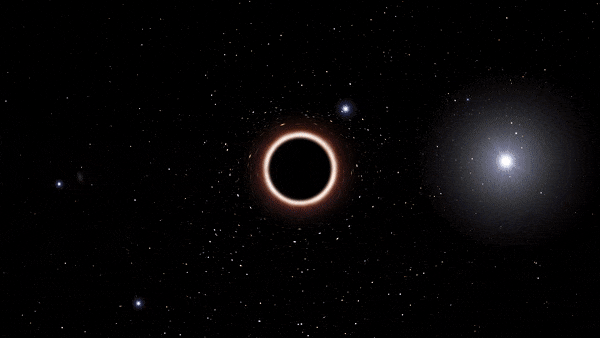Sagittarius A* – The Monster Heart of the Galaxy Containing Earth May Not Be a Supermassive Black Hole but a Mysterious, Smooth, Spherical Object.
For a long time, astronomers have believed that the Milky Way – the galaxy containing Earth – has a supermassive “monster” black hole at its center known as Sagittarius A*. However, new research led by astrophysicist Eduar Antonio Becera-Vergara from the International Center for Relativistic Astrophysics in Italy asserts that Sagittarius A* is not a black hole, but rather a “dark sphere,” ejecting “dark matter” – the mysterious, invisible substance that fills the universe.

Graphic depiction of star G2 escaping as it passes very close to the mysterious object at the center of the galaxy containing Earth – (Image: ESO)
They refer to the dark matter from this hypothetical object as “darkinos.” The properties of these particles have helped recreate a model that fits the strange phenomena occurring at the center of the galaxy.
According to Live Science, there have been puzzling events if Sagittarius A* is regarded as a black hole. A giant star known as G2 approached it closely, but, inexplicably, was not “swallowed.” This was not the only “bystander” that Sagittarius A* overlooked. A supermassive black hole with such strong gravitational pull would not typically exhibit such “behavior.”
The research team suggests that the dark sphere is indeed powerful but “gentler” than a black hole. A star could be engulfed by the gas cloud surrounding it, but the star’s gravitational force is still strong enough to maintain its structure, escaping safely.
They also propose another ambitious hypothesis: supermassive black holes may not actually be black holes, but rather a mass of dark matter. It interacts with external objects and is invisible, similar to a black hole, but is not a “monster” that devours everything.
Many other scientists believe that the monster black hole Sagittarius A* is not aggressive simply because it is in a dormant state.
The unique study on the dark sphere has just been published in the journal Monthly Notices of the Royal Astronomical Society Letters.





















































